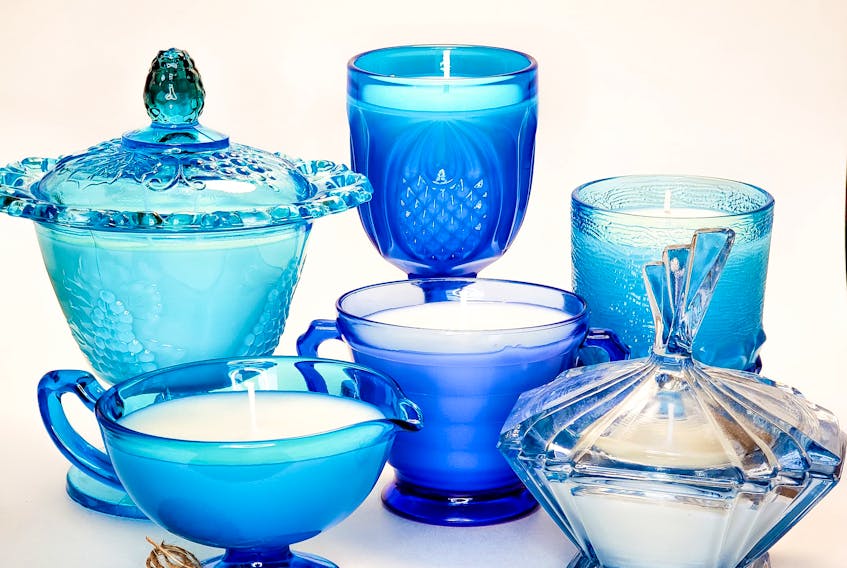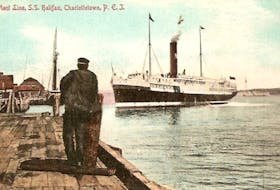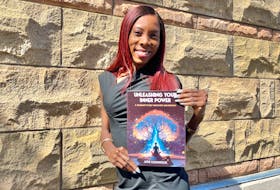Candles can help create a calm and relaxing atmosphere no matter where you are – something that we can all really use these days, says Tracy Cantin, founder of Ellie & Arthur, a business dedicated to creating one-of-a-kind coconut wax candles poured in vintage glassware.
During these last few months of self-isolation, Cantin says she has definitely seen a rise in candle burning.
Candles are an affordable way to self-sooth in these uncertain times, and an easy gift to give to someone who might be needing a pick-me-up, says the Summerside, P.E.I, resident. Besides, we're simply home so much more to burn them than we used to be, she says.

Emily Campbell, of Yorabode in St. John’s, N.L., focuses on making home goods like candles, essential oils, scent sprays, soaps, out of foraged botanicals. She has seen a recent shift where people are becoming more mindful of how spaces in their homes are curated. More and more, she says, people are aware of things like phthalates chemicals and the harmful effects of synthetic fragrance.
“I think the movement towards natural scents is another reason my business is growing. Since the weather has warmed up, the interest in candles shift to things like soap, reed diffusers and essential oils.”
Not only are people interested in burning candles, there has also been a surge of interest in making candles. Campbell normally offers candle-making workshops from her studio but has had to postpone them because of COVID-19.
To make candles on one’s own, Cantin says you must first decide on which type of wax to use.

Paraffin, she says, is the most common wax used in commercial candles, simply because it is the cheapest. It is also very problematic, however, when it comes to consumer ethics as it is petroleum-based, and as such it is simply not a sustainable or environmentally friendly product, she says.
Campbell agrees, saying paraffin candles are made from crude oil, that icky black stuff, and have been shown to emit harmful chemicals as they burn.
Soy, which Campbell uses, a natural product, used as a cleaner crop, effectively sucks up toxins from the soil, and soy wax works in a similar way, she says. When you burn a soy wax candle, it absorbs odours or toxins in the air. Campbell does warn that these studies were conducted, however, by soy companies. She has noticed, though, that even an unscented soy wax candle will take smells out of the air.
Beeswax, says Campbell, is another great natural product. It has a beautiful honey aroma and burns very clean. Although, she says she finds it’s not well suited for scented candles as it already has its own distinct aroma.
Cantin uses coconut wax in her business, a relatively new type of wax that is completely natural, sustainable and ethically sourced. It also holds scent extremely well and has a much lower melt temperature than other waxes, she says. This means that your candle burns cooler and will last longer.
Of importance to note, says Cantin, is checking candles for the mention of palm wax.
“If you see palm listed on your candle label, please walk away! Not only does the deforestation for palm harvesting have terrible environmental ramifications, it is also linked to some pretty horrific humanitarian issues.”
After selecting and sourcing the wax, Campbell says candlemakers then need a pot, clothes pins, a thermometer (candy or meat will work), a spoon, wicks and vessels to pour the wax into.
Before beginning, Paula Higgins of PNE Candle Co in Bible Hill, N.S., says she did a lot of research via YouTube, watching as many “do not do this” videos as she could.
From there, Higgins says there is a lot of trial and error.
Posted by PNE candleco on Thursday, May 14, 2020
Most people don’t realize that there are many different wicks that are perfect for certain waxes and size of jars, it is a process at first to see which wick suits your candles best, she says.
Common mistakes for a first-time candle maker would be assuming it’s as easy as melting wax and pouring, says Higgins.
“I was amazed at how much math was involved in perfecting a candle, everything is weighed perfectly to the ounce, the temperatures have to be just right for the fragrance to mix with your wax, the wick has to be the right one for your size jar and then you have to pour very slowly for an even pour and smooth tops when they harden. It is very rewarding when you do a large batch and they are perfect,” says Higgins.
Learning how to make a beautiful and safe product does not happen overnight, but it is certainly a rewarding journey, adds Cantin. She suggests keeping a journal and taking lots of notes as you experiment.
Cantin says the biggest mistake she sees is people is not testing enough. Candles can be very dangerous if made improperly. She also says to trim your wick. Before every burn, even the first, trim your wick to a quarter inch.
“I cannot stress the importance of this enough. Not only will your candle last much longer, your candle will be much safer. It's a win-win!” says Cantin.
In addition, Campbell says tunnelling can happen, when your candle burns down the centre, but wax remains collected on the sides of the jar. To avoid, this, the first time you burn a candle, make sure it burns all the way to the edge. If the candle ever starts to tunnel after one or two burns, you may be able to rescue it by burning it for longer or sticking it in the oven at the lowest temperature so the wax pool extends to the edge of the jar. If the candle has tunnelled after four or five burns, it may be too late to rescue it. You shouldn’t have to push wax away from the edge on a well-made candle properly burned, says Campbell.
It is imperative to be safe when burning candles, as they are a common cause of house fires, says David Rossiter, P.E.I.’s provincial fire marshal. Keep lit candles safely away from children and pets and blow out all candles before leaving the room. Buy good quality candles that are smoke free and drip free and secure candles in a sturdy holder, in a location where they can’t be knocked over, he advises.
Higgins has turned her candle making passion into a way to help others. Recently in the aftermath of the Portapique mass shooting in Nova Scotia, Higgins created a fundraiser for two of the families, as she had provided childcare for both.
I sold my soy candles with seven different scents, putting a Nova Scotia flag on the candle and donating all proceeds, only keeping enough to cover the supplies, says Higgins.
“I had over 1,200 orders within the first 24 hours of posting. In the end, I donated $4,000 to each of the two families,” she says.
Higgins still has a few of these Nova Scotian candles available, and can be contacted through her Facebook page, PNE CandleCo.
It is important, now more than ever, to spend our money wisely, says Cantin.
“I encourage you to shop small and support your local makers and businesses whenever possible,” she says.
Links:
http://www.ellieandarthur.com/
https://www.facebook.com/pnecandleco/









